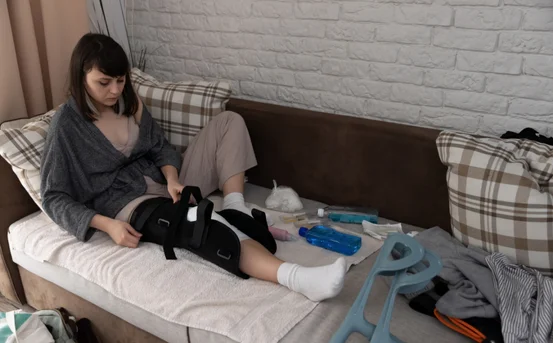Carpal Tunnel release surgery affects millions of people globally, causing numbness, tingling, and pain in the hand and wrist. When conservative treatments fail to provide long-term relief, carpal tunnel surgery becomes the gold standard for permanent symptom resolution. This comprehensive guide explores everything you need to know about expert carpal tunnel surgery, from diagnosis to recovery and long-term outcomes.
Carpal Tunnel Syndrome occurs when the median nerve, which runs from your forearm into your palm, becomes compressed within a narrow passageway in the wrist known as the carpal tunnel. This compression leads to a range of uncomfortable symptoms including pain, tingling, numbness, and hand weakness. Left untreated, CTS can significantly interfere with daily activities and may lead to permanent nerve damage.
What Is Carpal Tunnel Release Surgery?
Carpal Tunnel Syndrome occurs when the median nerve, which runs from your forearm into the palm, becomes compressed at the wrist. This nerve passes through a narrow passageway in the wrist called the carpal tunnel, along with tendons. Repetitive wrist movements, inflammation, or medical conditions like diabetes or rheumatoid arthritis can cause the tunnel to narrow and squeeze the nerve.
Common Symptoms of Carpal Tunnel Syndrome :-
-
Numbness or tingling in the thumb, index, middle, or ring fingers
-
Hand weakness, especially when gripping objects
-
Pain radiating up the arm
-
Symptoms worse at night or after prolonged wrist activity
When Is Surgery Needed?
In early or mild cases, non-surgical treatments like wrist splints, corticosteroid injections, or physical therapy can be effective. However, if symptoms persist or worsen, or if there is evidence of muscle atrophy or severe nerve compression, carpal tunnel release surgery may be recommended.
Key Signs You May Need Surgery :-
-
No improvement after 6 months of conservative treatment
-
Constant numbness or hand weakness
-
Positive nerve conduction studies showing median nerve compression
-
Muscle wasting at the base of the thumb
Types of Carpal Tunnel Surgery
There are two main surgical techniques used to treat CTS :-
- Open Carpal Tunnel Release Surgery :- In this traditional method, a small incision is made in the palm to access and cut the transverse carpal ligament, which relieves pressure on the median nerve. It offers direct visibility and is ideal for severe or complex cases.
- Endoscopic Carpal Tunnel Release Surgery :- This minimally invasive technique uses one or two small incisions and a tiny camera (endoscope) to guide the surgeon. It typically results in a quicker recovery and less post-operative pain, although it requires specialized surgical expertise.
Choosing an Expert Surgeon
When it comes to carpal tunnel surgery, choosing an experienced and board-certified orthopedic or hand surgeon can significantly impact your outcome. Look for :-
-
Fellowship training in hand or orthopedic surgery
-
High patient volume in carpal tunnel procedures
-
Positive patient reviews and outcomes
-
Use of modern minimally invasive techniques
-
Transparent consultation and aftercare process
Pro Tip :- Ask your surgeon about their success rates, complication statistics, and recovery protocols during your consultation.
Preparing for Carpal Tunnel Surgery
Pre-Surgery Evaluation :-
-
Medical history review
-
Nerve conduction studies or EMG
-
Blood tests or imaging if necessary
-
Discontinuation of certain medications like blood thinners
Pre-Operative Instructions :-
-
Avoid eating or drinking for 6–8 hours before surgery
-
Arrange for someone to drive you home post-surgery
-
Wear loose, comfortable clothing
-
Remove jewelry, nail polish, or artificial nails from the operative hand
What Happens During the Procedure?
Carpal tunnel surgery is typically performed as an outpatient procedure under local anesthesia, sometimes combined with light sedation.
Step-by-Step Overview :-
-
The surgical site is cleaned and numbed.
-
A small incision is made (either open or endoscopic technique).
-
The transverse carpal ligament is carefully cut to release pressure.
-
The skin is closed using stitches or surgical glue.
-
The hand is bandaged and immobilized temporarily.
The procedure typically takes 15–30 minutes and patients can return home the same day.
Recovery After Carpal Tunnel Surgery
First Week After Surgery :-
-
Mild to moderate pain, managed with over-the-counter painkillers
-
Keep the hand elevated to reduce swelling
-
Avoid strenuous activity and heavy lifting
-
Keep the dressing clean and dry
Weeks 2–6 :-
-
Stitches (if any) are removed around day 10–14
-
Begin gentle stretching and hand exercises
-
Gradual return to daily activities
-
Physical or occupational therapy may be recommended
Long-Term Recovery :-
-
Most patients regain full function in 2–3 months
-
Grip strength may take 6 months to fully return
-
Recurrence is rare with expert surgical care
Benefits of Expert Carpal Tunnel Surgery
Opting for an experienced surgeon significantly improves your chances of a successful outcome. Key benefits include :-
-
Permanent symptom relief in 90–95% of cases
-
Faster recovery with endoscopic techniques
-
Improved hand strength and function
-
Minimal scarring and low complication rates
Potential Risks and Complications
Although carpal tunnel surgery is considered very safe, potential risks include :-
-
Infection at the incision site
-
Nerve or blood vessel injury (rare)
-
Scar tenderness or pillar pain
-
Incomplete relief of symptoms
-
Temporary hand weakness
Choosing a highly experienced surgeon minimizes these risks significantly.
How to Prevent Future Wrist Problems?
After surgery, adopting wrist-healthy habits can help prevent future issues :-
-
Use ergonomic keyboards and wrist supports
-
Take regular breaks from repetitive tasks
-
Perform hand stretches and wrist exercises
-
Maintain a healthy weight and manage chronic illnesses
Conclusion
If you’re struggling with persistent symptoms of Carpal Tunnel Syndrome, don’t ignore it. Delaying treatment can lead to permanent nerve damage. Expert carpal tunnel surgery offers safe, effective, and lasting relief for patients who haven’t responded to conservative treatment.























